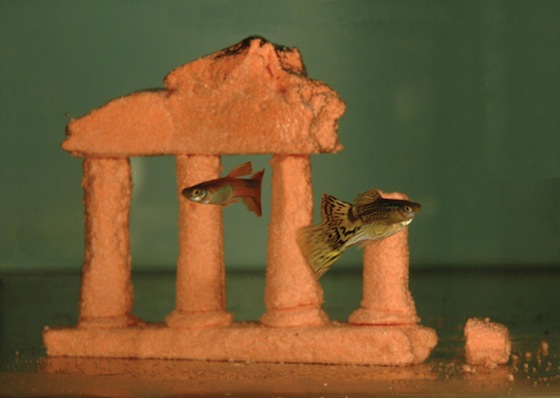Why does sprinkling a little water enable sand to stick together sufficiently to enable the building of sandcastles? The cohesive forces produced are strong enough that one can build a tower that is 2.5 meters high on a mere 20 cm base. A group of scientists have looked into this and come up with an explanation.
The formation of capillary bridges between sand grains are the cause of the stiffness of sculptured wet sand in a sandcastle, as opposed to dry sand which can hardly or not support its own weight. Qualitatively, the liquid leads to the formation of capillary bridges between the sand grains, and the curvature of the liquid interface leads to a capillary pressure causing a force of attraction between the grains. This then creates a network of grains connected by pendular bridges, and allows, for example, creating complex structures such as sandcastles.
In science, whenever one proposes an explanation for something, that explanation becomes more plausible if one can use that same mechanism to predict a new result that may not have struck anybody before the explanation was proposed. (This was, and still remains, the big failure of so-called intelligent design creationism. Its advocates do not even suggest a mechanism for how it works, let along a prediction for a new effect using that mechanism.)
In this case, what these scientists realized was that you could build even bigger castles underwater, to take advantage of the higher pressure there, provided you appropriately reversed some properties by using water-repelling sand.
For normal sand however, this will destroy the liquid bridges between grains and thus the strength of the material. However, if hydrophobic sand is used the roles of water and air interchange completely. In this case the air and not the water “wets” the grains and we can simply interchange water and air, which does not change the bridge force. Since the force between beads remain constant, but the effective density of compacted sand changes from 1.6 g/cm3 to 0.6 g/cm3 when immersed in water. This makes it possible to build underwater sandcastles, which are even more spectacular than normal ones.
And here is one.
Pretty neat, huh? Now fish can take their kids to the beach and build sandcastles too.
(Via Discoverblogs)


I can’t find a link to cite, but I read once that sandcastle competitions don’t use beach sand. Erosion has left the grains too smooth and round, unable to cohere to one another. Supposedly competitions use desert sand because it’s more jagged. Can anyone confirm or refute that?
Sand that remains in the water might be a different story, as in the picture.
Since so much of this type of science was done well over half a century ago (the important details are textbook examples in interfacial materials chemistry), it is easy to forget that it is still an active area of research and people are still finding new things to investigate that are of interest to everyone. Thanks for sharing, Mano.
As an aside to interested readers, another erosion effect that is also (unexpectedly) driven by the same interfacial energies is fracturing from freezing/remelting. Most people (myself included) assume that rock and concrete fracture due to the expansion of the water when it freezes, but actually the same effect is observed for other materials such as benzene that shrink when they freeze.
What is actually going on is that the newly formed crystallites “want” to be spherically shaped. Microscopic pores and channels in the rock are typically non-spherical, meaning the rigid structure is forcing the solid into an energetically unfavorable shape. The interfacial energy comes in here, too, because the energy you gain in “wetting” the rock with liquid and with a solid form of the same compound is different (just like it is different for the different sands discussed in that paper).
Thus, the growing crystallite is being halted by these two effects. The resulting “chemical pressure” manifests as a mechanical pressure, and this can be an exceptionally huge force at critical locations in the material. Thus, the rock breaks.